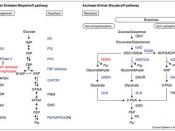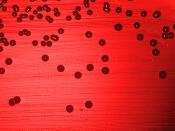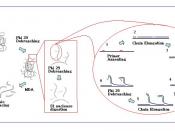Genome Sequencing Microbiology has entered the realm of genome sequencing. This biological revolution is opening up new dimensions in our view of life.
In 1995, a report on the entire DNA sequence for the genome of the bacteria Haemophilus influenzae was published . Although the genomes for a number of viruses had been completed before this, H. influenzae was the first free-living organism to have it's genome sequenced, and as such, this report remains a biological milestone. Since then, the entire genome sequences for over 10 microorganisms have been compiled and released and more are on their way. The completed microbial genomes include: Haemophilus influenzae finished 1995 Mycoplasma genitalium finished 1995 Methanococcus jannaschii finished 1996 Synechocystis sp. finished 1996 Mycoplasma pneumoniae finished 1996 Saccharomyces cerevisiae finished 1997 Helicobacter pylori finished 1997 Escherichia coli finished 1997 Bacillus subtilis finished 1997 Archaeoglobus fulgidus finished 1997 The benefits of complete genome sequencing projects include a greater understanding of the organisms being sequenced and acknowledgment of the minimum complement of genes necessary for a free-living organism.
Of the organisms that have already had their genomes sequenced, a number are of particular importance. For example, Mycoplasma genitalium has a complete nucleotide sequence that is only 580,070 base pairs long, and as such, is believed to be the smallest genome of any free-living organism. Because of it's unique size, this genome presents a way of studying a minimal functional gene set. In addition, complete genome sequencing projects are currently being carried out on a number of microbial pathogens in an attempt to better understand them. The inference of molecular structures, in particular genome sequences, have direct practical consequences in clinical microbiology. Data and analyses of clinically important microorganisms are being used to develop molecular diognostics as well as to guide research in the nature of these...


